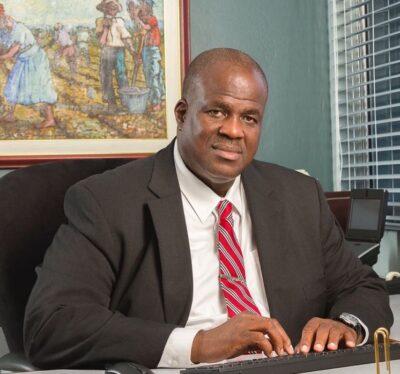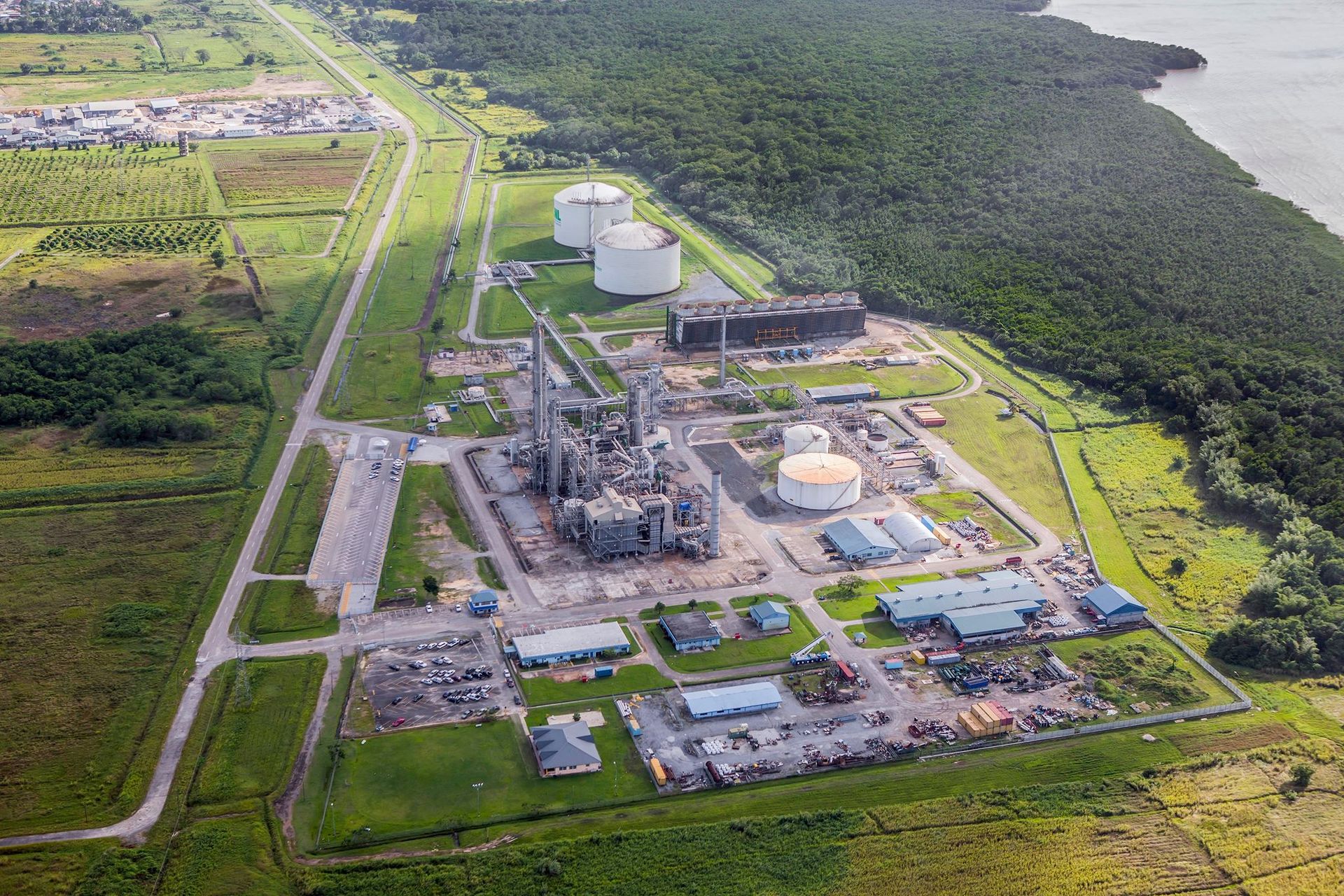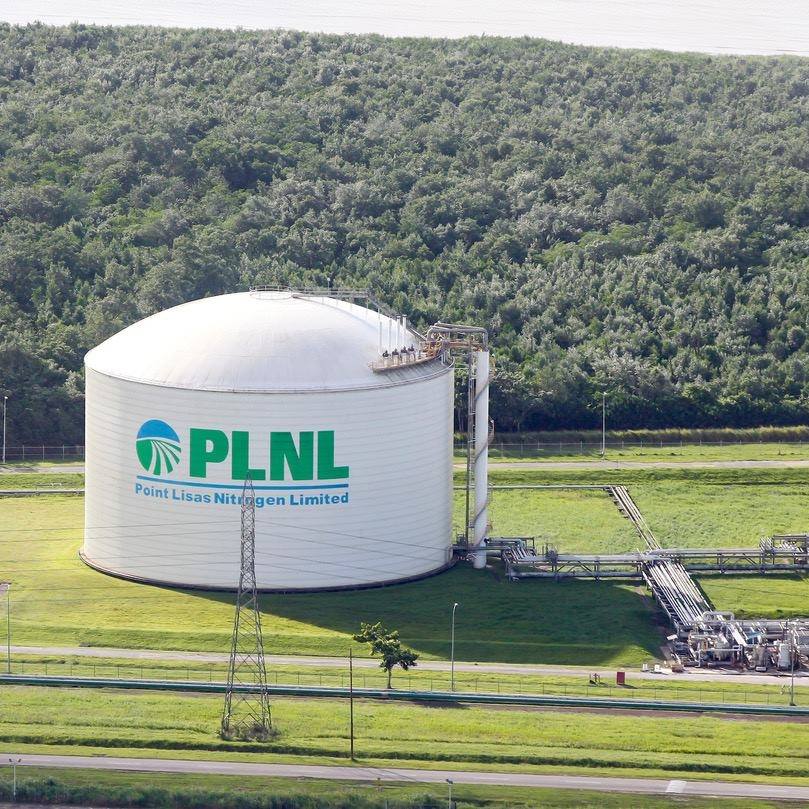CEO's PERSPECTIVE
Fitzroy Harewood
President, Point Lisas Nitrogen Limited

LINKAGE Q4 (2024) - HUMAN FACTORS
What are some of the major challenges you faced in your career and how has it influenced your role as a leader? What makes a good leader?
I commenced my professional journey as a graduate in Electrical Engineering when I was merely twenty-one years old.
Some of the major challenges I encountered were:
1. I faced the challenge of leading and managing teams comprising professionals and semi-professionals who were significantly older and more experienced than myself. Consequently, I needed to establish myself as a credible leader to gain the acceptance and trust of the team members I was appointed to oversee.
a. This experience taught me the value of “seeking to first understand BEFORE being understood”. Essentially, I learned to listen and understand context before determining a course of action. I learned that there is “no one best way” and that each leadership situation requires its unique approach(es). Particularly, I learned that sometimes the best solution lies with the team members themselves who are intimate with the issues and the nuances of the situation that requires addressing.
2. Leading multi-disciplinary teams and projects. After a few years into my career, I was asked to lead large projects with multi-disciplinary teams that included professionals from other engineering disciplines and non-engineering team members, which was challenging as I now had to operate outside the “comfort zone” of my own professional discipline.
a. Consequently, I learned and adopted a more situational leadership style. That is, I learned to focus on “seeing the forest for the trees” and to trust my team members who possessed more competence in some areas of the team’s functions than I had. I also learned to research and before familiar – if not intimately aware – of all areas of the business and the various work processes. I learnt that superficiality will not do and so I spent a lot of time researching and learning. Leaders need to “get up to speed” and there is no shortcut to that than through reading, learning, talking to those on the frontline and becoming familiar with the nuances of the business.
b. I also learned that project management is a discipline and competence that must never be underestimated, and I therefore learned project management principles and skills to add to my overall leadership competence.
3. Leading in a unionised environment. For most of my career, I have worked in unionised organisations, which meant working in accordance with collective agreements and still delivering on business imperatives.
a. I learnt to be thorough and very clear about what matters for the safety and success of the businesses. This included being good at communicating positions and learning to build consensus and commonality of interest. I also developed greater empathy as I learnt to see issues from the perspective of those who are at the “sharp end of the stick”. I also learned to work through workplace challenges by genuinely engaging workers’ representatives with good data and valid arguments.
4. Guiding with a positive attitude during business adjustments like downsizing and reorganisation. Throughout my career, I've occasionally led through challenging times, when companies needed to adapt to major market shifts or stakeholders' choices to improve underperforming business.
a. Maintaining an optimistic outlook amidst these scenarios was demanding, and it deepened my understanding of the business's specific conditions and key success factors. I further recognised that positive business outcomes are advantageous for the workforce, who often endure negative impacts from such transformations. Additionally, these experiences enhanced my sense of empathy and accountability towards the teams I oversaw.
5. Handling the situation during and following a severe injury or death within a company. Throughout my professional life, I have been part of organisations that experienced such devastating incidents. I've had to manage both the immediate crisis response and the subsequent repercussions, notably with the families of those affected.
a. These events have sharpened my commitment to people's health and safety in the workplace, highlighting how the "Tone from the Top" defines a company's safety culture. I have understood that as a CEO, leading by example in human resources and health, safety, and environment is critical, and the way leaders react is crucial. I've recognised the importance of established, well-rehearsed emergency response plans. Workplace safety depends on the systems and cultures in place that allow for risk mitigation, especially in the energy sector. These challenges are global, and even as a small nation, we have contributed to safer work practices industry wide. I have also come to realise that families expect their loved ones to return home safely, and it's my duty as a leader to ensure that happens every day under my watch.
6. Mentoring and nurturing the growth of young leaders and professionals has been a considerable part of my career journey, where advancing to higher positions brought the responsibility of guiding emerging talents.
a. My deep-rooted empathy for individuals fueled my initial enthusiasm for this position, but I quickly grasped that it's not merely a passion project—it's a critical element of leadership. As an HR Manager in my prior role, I gained insights into the importance of strategic workforce planning and mastered the art of organisational analysis to craft succession strategies. Furthermore, I came to understand its significance as a national priority for enduring corporate success. Much like I greatly benefited from exceptional leaders who guided my career development, I recognised my responsibility to mentor the emerging talent within our field. Consequently, this led me to contribute to the industry by actively participating in professional groups and working cooperatively with counterparts throughout the sector.
What makes a good leader?
A great leader is driven by a belief in a purpose greater than themselves, fuelling their passion and guarding against arrogance. They possess deep knowledge of the entity they oversee, an understanding that evolves continuously as they recognise the need for varied leadership styles. Integrity, empathy, accountability, and trust are core to their values. Emphasising teamwork, they prioritise collective success over personal achievements and communicate honestly to inspire trust and articulate their vision. Prioritising employee safety and long-term viability, they value human life above financial gains.
What are the foundations of PLNL’s culture and how does this guide your work, decisions and relationships with your employees?
Point Lisas Nitrogen Limited has been in operation at the Point Lisas Industrial Estate since 1998 and the management and staff (one hundred percent local) have adopted as its values, Safety, Integrity, Accountability, Collaboration, Respect and Innovation.
These are not just words on a poster on the wall, but I am proud to say that the behaviors and overall performance of the employees of the company reflect these values daily.
As a leader with the privilege to work with this team, I understand that “Tone at the Top” matters and in my communications to the management team and the work teams, I make every effort to ensure that what I say and do is aligned to these values. This is not difficult, since I personally hold these values myself, so it’s easy to demonstrate the same in my daily interactions.
As we deal with the many challenges facing business, both externally and internally, I am guided to reinforce these values in the ways our people are treated and how work situations are handled.
How can organisations enhance their Safety Culture?
At PLNL we are experiencing improvements in our Safety Culture at the site, through strong focus on three broad categories, Technical, Behavioural and Values. This is still a work in progress, but the improvements are very evident, even in the language amongst our employees.
Based on our efforts in each of these areas, the following are brief summaries of how an organisation can enhance its safety Culture:
• Technical
o Adopt risk-based approaches to work within the organisation. This means understanding – in detail – what are the critical tasks within the business. Some people are obsessed with being safe with every and any aspect of the work at their companies but, as recent national events have shown us, some tasks are inherently riskier than others.
o Therefore, there must be a strong focus on knowing and identifying critical tasks and ensuring that the mechanisms and competence for identifying same are well developed throughout the organisation. Indeed, we have found that just the process of reviewing day to day activities and challenging what is critical versus what is not so critical helps with improving the overall sensitivity for high-risk activities. There are a few publications on this issue that are worth the read and we have even had one of the authors at our site conduct workshops on risk identification and management.
o It’s important that organisations are very clear on what are the critical tasks in their organisations and those tasks are treated with due diligence and deliberation, risk assessments and mitigation measures.
• Behavioural
o Focus on creating a culture that allows information to flow up, across and down the organisation without incrimination and in accordance with the HOP principles, which according to Todd Conklin, the five principles of HOP (Human and Organisational Performance) are:
- Human error is normal.
- Blame fixes nothing.
- Learning is vital.
- Context drives behavior.
- People create safety.
o Getting employees of an organisation to adhere to these principles is not easy and not achieved quickly but the value to be gained is immeasurable in the context of an improved safety culture. We began by focusing heavily on learning from our incidents and our good practices and I have personally accepted that my response as a leader matters.
• Values
o By maintaining focus on a values-based organisation that employees believe in and identify with. An organisation where employees feel and are empowered to make safe decisions about critical tasks is ideal. This means that other than the traditional safety activities, the organisation’s behaviours are reflective of its stated values. This builds trust amongst the employee population and if the employees think their leaders are credible, they are more likely to come forward with learnings and suggestions for improvement. 
What lessons did we learn from the pandemic response that we must take with us into the future?
My major takeaways from the pandemic response are as follows:
• Managing deliverables and results rather than presence.
o We learnt to manage our teams according to their deliverables rather that whether they were (are) at work each day or not. With remote work and flexible work hours, the focus has shifted to managing the deliverables. The questions are more around, did the employee or team deliver and what was(is) the quality of the result? Of course, this also means a major change for the employee who can no longer use “I wasn’t at my desk” as an excuse for not delivering on an assignment.
• Focusing on what matters.
o The pandemic re-emphasised our human vulnerabilities and so employees today are more forthright in prioritising family-related matters over work assignments/activities. As leaders we need to understand that and spend more time in genuine care about an employee’s family situation, because we now know that “context matters”.
• Collaboration across disciplines, departments, companies and organisations.
o As we dealt with the pandemic, we collaborated with other stakeholders in our industry, whether they were competitors or regulators. Continued collaboration is now the order of the day and we are now finding ways to share experiences on the basis of the belief that “a raising tide raises all ships”.
How does PLNL plan to continue building a culture that enhances learning, empowering and sustaining?
At PLNL we have pivoted to a way of working that is based on Human and Organisational Performance principles, even as we continue to improve our understanding of critical tasks, their assessments and their risk mitigation measures.
We consider our work in this regard to be in early development, and we intend to push ahead with these approaches in the years ahead. This will also be complemented by our continued development of technical, supervisory and management leadership competence.
For us, leadership occurs throughout the organisation, and it’s important that the “leadership presence” of each our employees reflects the values of the company – each and every day.
Finally, we will continue to foster a learning environment by reviewing near misses and significant incidents whilst ensuring that the “Tone at the Top” is consistent with our agreed values and aspirations.